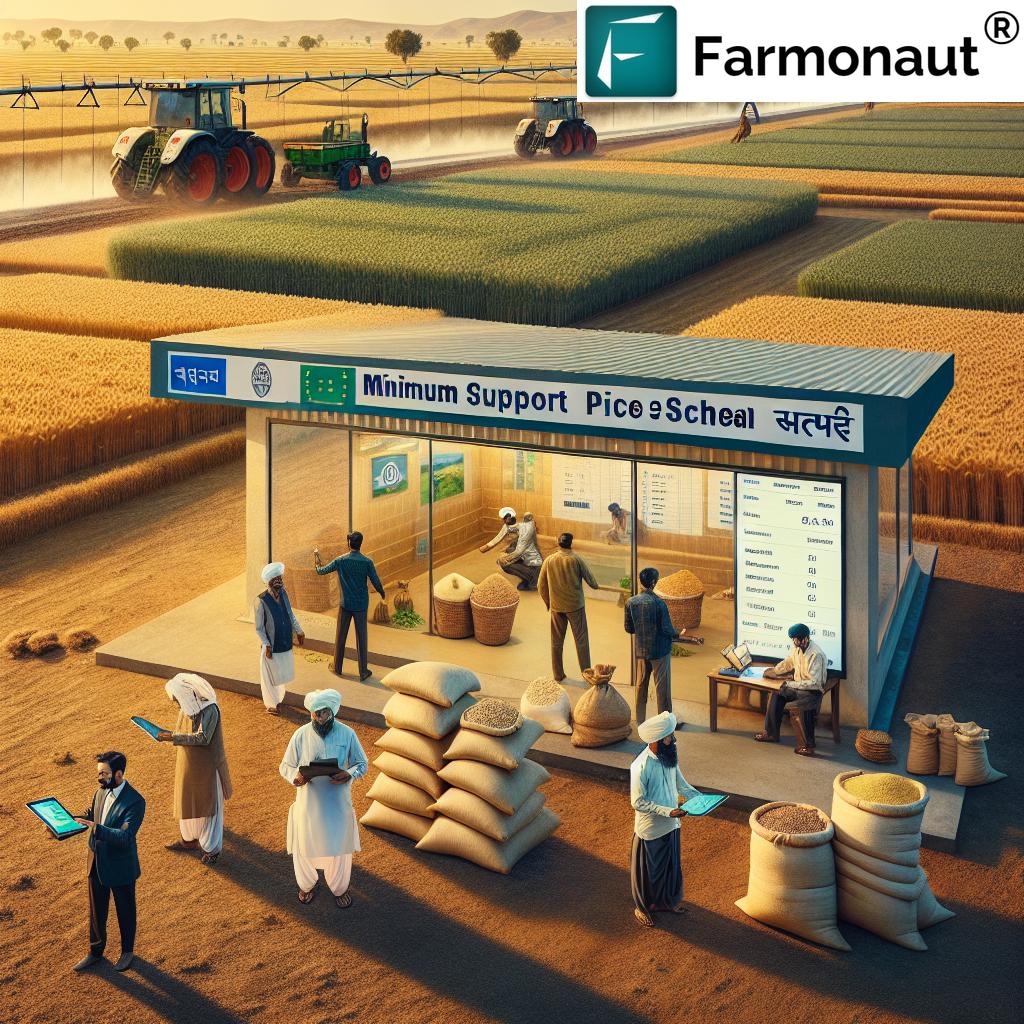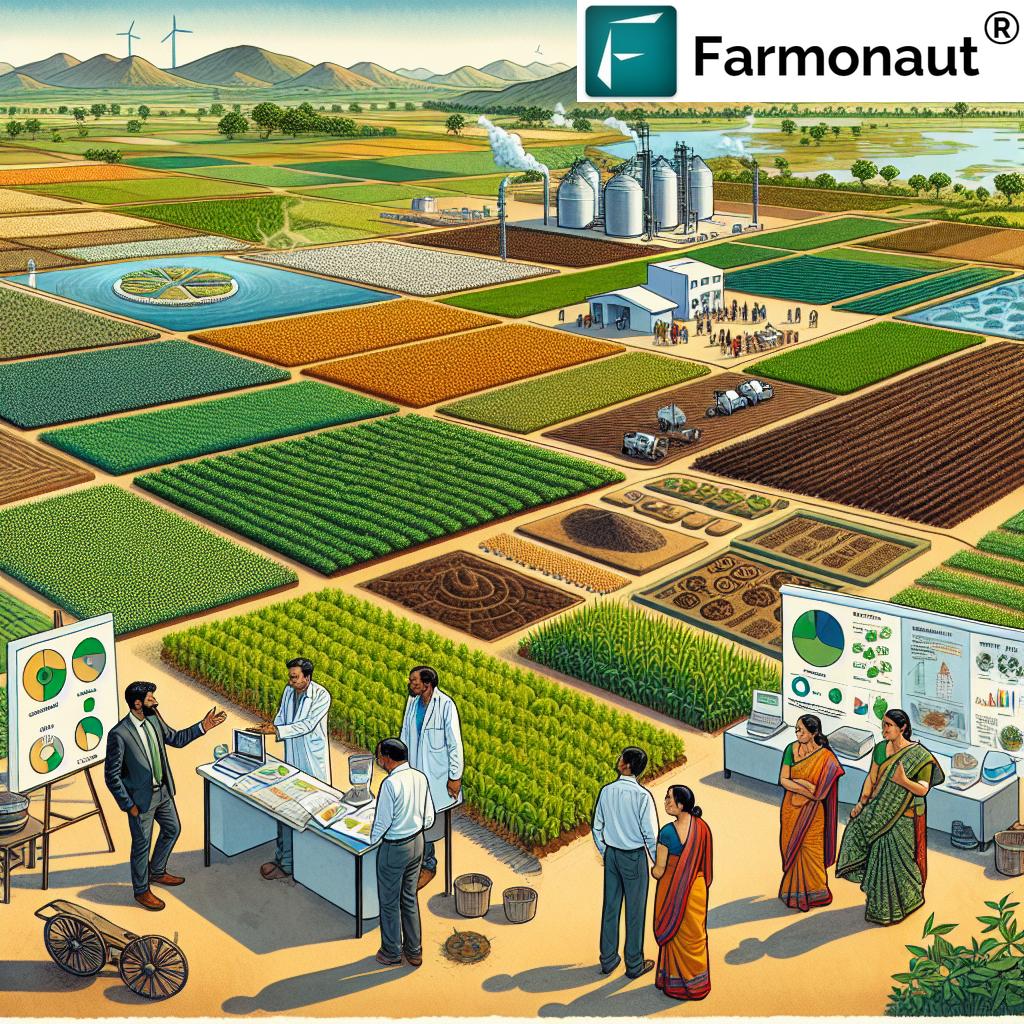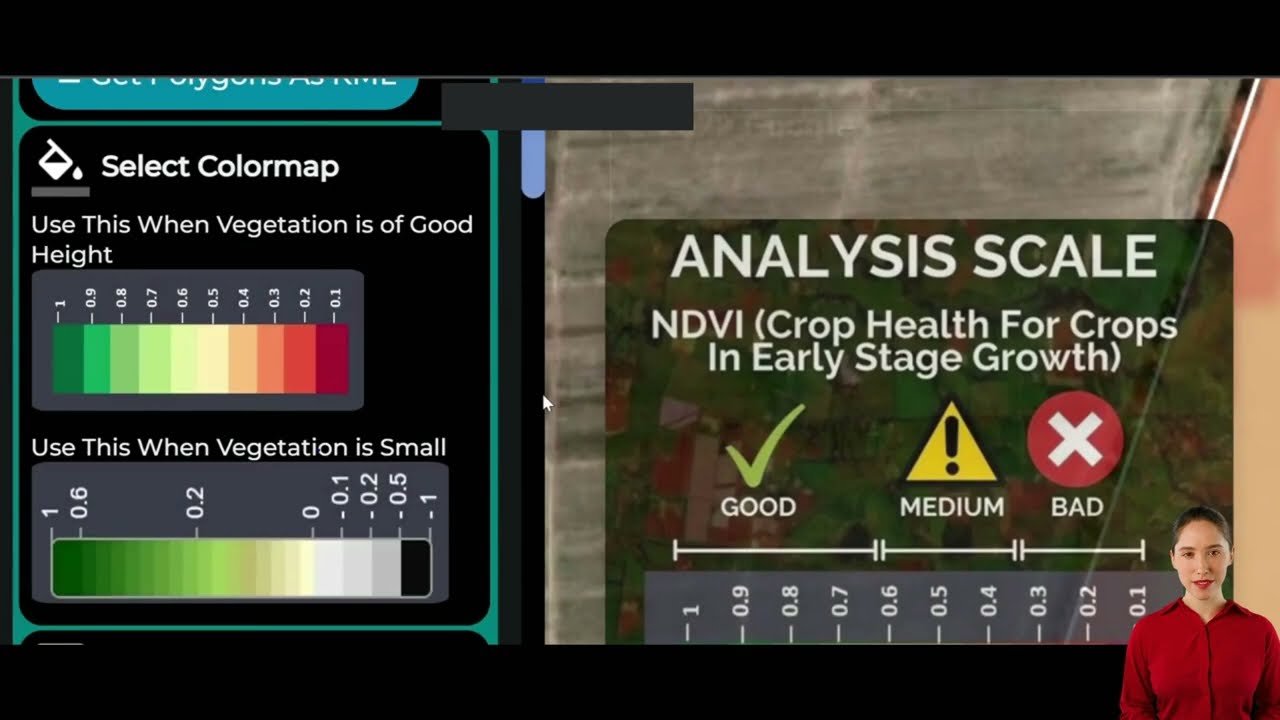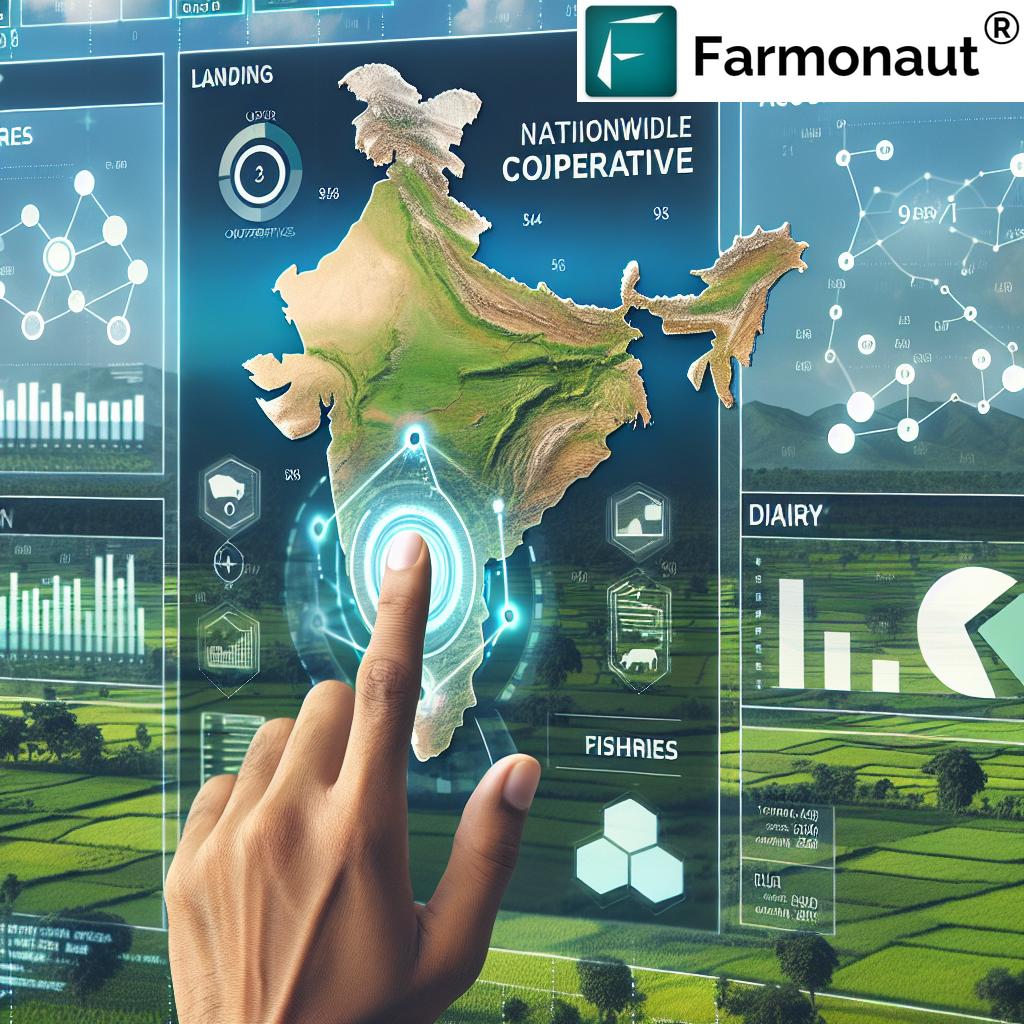Gujarat Farmers’ Boost: Minimum Support Price Scheme Launched for Groundnut, Soybean, and Pulses
“Gujarat’s Price Support Scheme covers 160+ centers for fair crop procurement of groundnut, soybean, urad, and moong.”
We are excited to bring you the latest news on Gujarat’s agricultural sector, which has seen a significant boost with new farmer support initiatives. In this comprehensive blog post, we’ll explore the recent developments that are shaping the state’s agricultural landscape and driving growth in the sector.
The Launch of Wide-Scale Crop Procurement at Minimum Support Prices
The Gujarat government has taken a monumental step towards ensuring fair prices for farmers’ produce by launching a wide-scale crop procurement program. This initiative, known as the Price Support Scheme (PSS), covers essential crops such as groundnut, soybean, urad, and moong. Let’s delve into the details of this game-changing scheme.
- Over 160 procurement centers: The state has established more than 160 centers across Gujarat to facilitate the smooth implementation of the PSS.
- Fair pricing: These centers ensure that farmers receive fair prices for their produce, aligning with the minimum support price (MSP) set by the government.
- Coverage of key crops: The scheme primarily focuses on groundnut, soybean, urad, and moong, which are crucial to Gujarat’s agricultural economy.
This initiative is a significant step towards protecting farmers from market fluctuations and ensuring a stable income. By providing a guaranteed minimum price for their crops, the government aims to incentivize farmers to continue cultivation and boost overall agricultural production in the state.

Irrigation Technology Advancements
Gujarat’s commitment to agricultural growth doesn’t stop at fair pricing. The state has made significant strides in irrigation technology, which has played a crucial role in expanding the irrigated area and boosting crop yields. Here are some key developments:
- Narmada River water access: The state has improved access to Narmada River water for irrigation purposes, benefiting countless farmers across various districts.
- ‘Catch the Rain’ projects: Innovative water conservation initiatives have been implemented to maximize the use of rainwater for agriculture.
- Expansion of irrigated area: These efforts have led to a remarkable expansion of the irrigated area in Gujarat, now covering 62 lakh hectares.
The focus on irrigation technology has not only increased the availability of water for farming but has also contributed to more efficient water usage. This is particularly crucial in a state like Gujarat, where water scarcity can be a significant challenge for farmers.
Push for Natural Farming Practices
In line with global trends towards sustainable agriculture, Gujarat is making a concerted effort to promote natural farming practices. This initiative aims to address several key areas:
- Water conservation: Natural farming techniques often require less water, helping to preserve this precious resource.
- Soil preservation: By reducing the use of chemical fertilizers and pesticides, natural farming helps maintain soil health and fertility.
- Crop disease prevention: Natural farming practices can improve plant resistance to diseases, reducing the need for chemical interventions.
The push for natural farming is not just about environmental sustainability; it’s also about long-term economic benefits for farmers. By reducing input costs and improving soil health, these practices can lead to more stable and potentially higher yields over time.
The Impact on Agricultural Production
“Gujarat’s irrigated area has expanded to 62 lakh hectares, boosting agricultural production to Rs2.7 lakh crore.”
The combined effect of these initiatives has been nothing short of remarkable. Gujarat’s agricultural production has surged to an impressive Rs2.7 lakh crore. This growth is a testament to the success of various welfare schemes and the adoption of agritech solutions across the state.
Let’s break down the factors contributing to this growth:
- Fair pricing through MSP: Guaranteed prices have encouraged farmers to increase production.
- Improved irrigation: Access to water has allowed for more consistent and higher yields.
- Sustainable practices: Natural farming has led to better soil health and reduced input costs.
- Technology adoption: Agritech solutions have improved efficiency and decision-making in farming operations.
This growth in agricultural production is not just a number; it represents improved livelihoods for millions of farmers across Gujarat. It’s a clear indicator that the state’s agricultural policies are moving in the right direction.
The Role of Agritech Solutions
In the midst of these positive developments, it’s crucial to highlight the role of agritech solutions in driving agricultural growth. Companies like Farmonaut are at the forefront of this technological revolution in farming.
Farmonaut offers advanced, satellite-based farm management solutions that are making precision agriculture more accessible and affordable for farmers. Here’s how these solutions are contributing to Gujarat’s agricultural success:
- Real-time crop health monitoring: Satellite imagery provides farmers with up-to-date information on crop health, allowing for timely interventions.
- AI-based advisory systems: Personalized recommendations help farmers make informed decisions about crop management.
- Resource management tools: These help farmers optimize the use of water, fertilizers, and other inputs, reducing waste and improving efficiency.
By leveraging these technologies, farmers in Gujarat can enhance their productivity, reduce risks, and make more sustainable choices in their farming practices.

Comparative Analysis of Agricultural Initiatives in Gujarat
| Initiative | Description | Estimated Impact | Beneficiaries |
|---|---|---|---|
| Minimum Support Price Scheme | Guarantees minimum prices for key crops | Stable income for farmers, increased production | Groundnut, soybean, urad, and moong farmers |
| Price Support Scheme | 160+ procurement centers across Gujarat | Fair prices, reduced market exploitation | All farmers growing covered crops |
| Irrigation Advancements | Improved water access, ‘Catch the Rain’ projects | Expanded irrigated area to 62 lakh hectares | Farmers across various districts |
| Natural Farming Practices | Promotion of sustainable agriculture | Improved soil health, reduced input costs | All farmers, especially small and marginal |
| Agritech Solutions | Satellite-based farm management, AI advisories | Enhanced productivity, optimized resource use | Tech-savvy farmers, large-scale operations |
Future Outlook: Continued Support and Innovation
As we look to the future, farmers in Gujarat can expect continued support through innovative programs, fair agricultural benefits, and cutting-edge farming techniques. The state government’s commitment to agricultural growth is evident in its multifaceted approach to farmer welfare.
Some areas to watch for future developments include:
- Expansion of MSP coverage: Potential inclusion of more crops under the minimum support price scheme.
- Further advancements in irrigation: Continued efforts to expand and optimize irrigation infrastructure.
- Promotion of organic farming: Increased support for farmers transitioning to organic practices.
- Integration of AI and IoT in agriculture: Greater adoption of smart farming technologies across the state.
These ongoing efforts are expected to further boost Gujarat’s agricultural sector, cementing its position as a leader in agricultural innovation and farmer welfare in India.
The Role of Technology in Gujarat’s Agricultural Future
As we’ve seen, technology plays a crucial role in the modernization and growth of Gujarat’s agricultural sector. Companies like Farmonaut are at the forefront of this technological revolution, offering innovative solutions that can significantly benefit farmers in the state.
Here are some ways in which Farmonaut’s technology can contribute to Gujarat’s agricultural future:
- Satellite-Based Crop Health Monitoring: By utilizing multispectral satellite images, farmers can gain valuable insights into vegetation health, soil moisture levels, and other critical metrics. This data-driven approach allows for more precise decision-making in irrigation, fertilizer usage, and pest management.
- AI-Powered Advisory System: Farmonaut’s Jeevn AI provides personalized farm advisory services, delivering real-time insights and expert crop management strategies. This can be particularly beneficial for farmers in Gujarat who are looking to optimize their farming practices.
- Blockchain-Based Traceability: For crops like groundnut and soybean, which are significant exports from Gujarat, Farmonaut’s blockchain-based traceability solutions can enhance trust and transparency in the supply chain, potentially opening up new markets for the state’s farmers.
- Resource Management Tools: With water conservation being a key focus in Gujarat, Farmonaut’s resource management tools can help farmers optimize their water usage, contributing to more sustainable farming practices.
By leveraging these advanced technologies, Gujarat’s farmers can potentially increase their yields, reduce costs, and make more informed decisions about their farming practices.
Explore Farmonaut’s API for advanced agricultural data
Challenges and Opportunities
While the outlook for Gujarat’s agricultural sector is largely positive, it’s important to acknowledge the challenges that farmers may face and the opportunities these challenges present:
Challenges:
- Climate change: Unpredictable weather patterns and extreme events can pose risks to crop yields.
- Water scarcity: Despite improvements in irrigation, water remains a precious resource that needs careful management.
- Market volatility: Fluctuations in crop prices can still impact farmers, even with MSP schemes in place.
- Adoption of new technologies: Some farmers may face barriers in adopting new farming technologies due to cost or lack of technical knowledge.
Opportunities:
- Climate-resilient agriculture: The push towards natural farming and the use of technology can help develop more resilient farming practices.
- Water-efficient technologies: Continued innovation in irrigation and water management can turn water scarcity into an opportunity for efficiency.
- Value addition and processing: Encouraging local processing of crops like groundnut and soybean can create additional income opportunities for farmers.
- Digital literacy programs: Initiatives to improve farmers’ digital skills can accelerate the adoption of beneficial agritech solutions.
By addressing these challenges head-on and capitalizing on the opportunities they present, Gujarat can continue to strengthen its agricultural sector and improve the livelihoods of its farming communities.
The Impact on Rural Economy and Farmer Welfare
The various initiatives and technological advancements in Gujarat’s agricultural sector are having a profound impact on the rural economy and farmer welfare. Let’s explore some of these effects:
- Income stability: The minimum support price scheme provides a safety net for farmers, ensuring a stable income even in the face of market fluctuations.
- Rural employment: The growth in agricultural production is likely to create more jobs in rural areas, not just in farming but also in related sectors like transportation and processing.
- Reduced migration: With improved agricultural prospects, there may be a reduction in rural-to-urban migration, helping to maintain the vibrancy of rural communities.
- Skill development: The adoption of new technologies and farming practices is leading to skill upgradation among farmers, making them more competitive in the modern agricultural landscape.
- Environmental sustainability: The push towards natural farming and efficient resource use contributes to the long-term sustainability of rural environments.
These positive impacts demonstrate that investments in agriculture can have far-reaching effects on rural development and the overall economic health of the state.
Access Farmonaut’s API Developer Docs for integration insights
FAQ Section
Here are some frequently asked questions about the recent agricultural developments in Gujarat:
Q: What crops are covered under the Minimum Support Price Scheme in Gujarat?
A: The scheme primarily covers groundnut, soybean, urad, and moong.
Q: How many procurement centers have been set up under the Price Support Scheme?
A: Over 160 centers have been established across Gujarat to ensure fair crop procurement.
Q: What is the current irrigated area in Gujarat?
A: The irrigated area in Gujarat has expanded to 62 lakh hectares.
Q: How has agricultural production in Gujarat been affected by these initiatives?
A: Agricultural production in Gujarat has surged to Rs2.7 lakh crore.
Q: What are some of the natural farming practices being promoted in Gujarat?
A: The state is promoting practices that focus on water conservation, soil preservation, and crop disease prevention without the use of chemical inputs.
Q: How can farmers in Gujarat access agritech solutions?
A: Farmers can access agritech solutions through various platforms, including mobile apps and web services offered by companies like Farmonaut.
Conclusion: A Bright Future for Gujarat’s Agriculture
As we’ve explored in this comprehensive overview, Gujarat’s agricultural sector is experiencing a significant boost thanks to a combination of government initiatives, technological advancements, and a focus on sustainable practices. The launch of the Minimum Support Price Scheme for crops like groundnut, soybean, and pulses, coupled with the expansion of irrigation infrastructure and the promotion of natural farming, has set the stage for continued growth and prosperity in the state’s rural areas.
The integration of agritech solutions, such as those offered by Farmonaut, is playing a crucial role in modernizing farming practices and improving efficiency. As these technologies become more widespread, we can expect to see even greater improvements in crop yields, resource management, and overall farm productivity.
While challenges remain, particularly in the face of climate change and market uncertainties, the comprehensive approach taken by Gujarat provides a model for agricultural development that balances economic growth with environmental sustainability and farmer welfare. As the state continues to innovate and adapt, the future of agriculture in Gujarat looks brighter than ever.
We encourage farmers, agribusinesses, and policymakers to stay engaged with these developments and to explore the various support schemes and technological solutions available. Together, we can build a more resilient, productive, and sustainable agricultural sector in Gujarat and beyond.




















